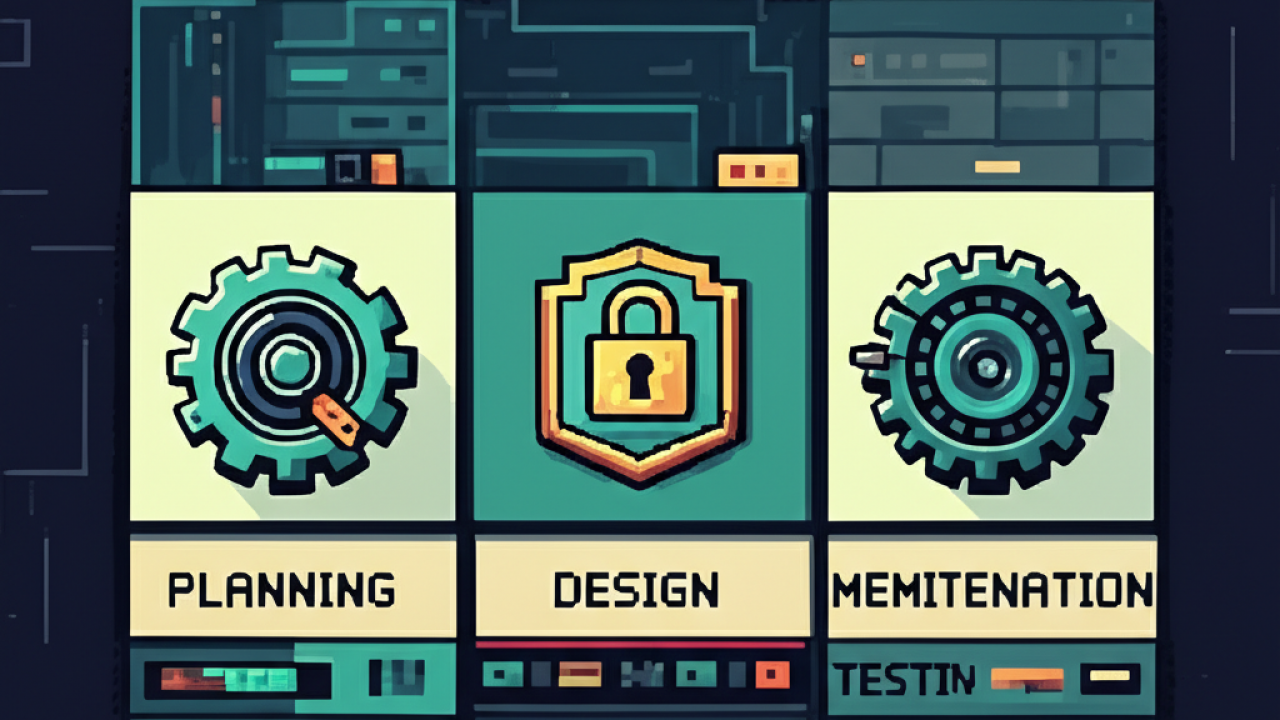In many teams, security review only happens at the end of the cycle, sometimes just a week before release after months of development. The result is almost always the same: reports full of alerts, features being cut, delays, and weeks spent fixing issues that could have been avoided with minutes of early prevention.
This scenario is far from rare. Treating security as a final gate creates unnecessary risks. Building secure software is not about “passing a final exam,” it is about making consistent decisions at every stage of the SDLC. Integrating security into every phase is not just a best practice, it is the realistic way to deliver reliable products, especially in devtools, where customers trust you with their own workflows.
Planning
This is the stage many teams tend to skip. The idea comes up and the rush is to start coding. But investing a few minutes here can save weeks of rework later.
Threat Modeling
“Threat modeling” may sound complicated, but it is simply a structured way of asking: “What can go wrong?”.
Bring the team together in a room (virtual or in person) and map the data flow of the application. Ask: where does the data come from, where does it go, and who can access it? At each step, raise possible risks:
- Malicious file uploads
- Leaked API keys
- Brute force attacks on logins
- Exposure of one user’s data to another
The goal is not to solve everything immediately but to create visibility. The outcome is an initial list of risks that can already guide design decisions.
In summary: treat security requirements as user stories. Example: “As a user, I want my account protected from unauthorized access.” Security is a feature like any other.
Design
If planning focuses on understanding what might go wrong, design is the stage for making architectural choices that reduce those risks from the start.
Secure Architecture 101
You do not need an advanced degree in cryptography to follow good practices. A few basic principles make a big difference:
- Principle of Least Privilege: every component, service, or user should have only the permissions strictly necessary to perform its function. A billing service, for example, does not need access to user chat logs.
- Defense in Depth: never rely on a single control. Assume firewalls can fail and passwords can leak. Each additional security layer (firewall, authentication, encryption) compensates for inevitable failures.
- Fail Securely: when an error occurs, the system should default to the most restrictive state. A failure in permission checks must result in “access denied,” not in accidental access granted.
This is also the time to consider compliance. If the system handles personal data, regulations like GDPR, LGPD, or CCPA must be treated as design requirements from the start, not as late adjustments.
In summary: involve someone with security expertise in reviewing technical design documents. A 30-minute discussion at this stage is far more valuable than days of fixes in production.
Development
It is during development that most vulnerabilities arise, but it is also where we have the most effective tools to prevent them.
Static and Dynamic Analysis
Relying only on human review is not enough. Automated security checks are essential:
- SAST (Static Application Security Testing): analyzes source code before execution to identify known vulnerabilities, such as SQL injections, hardcoded secrets, or the use of insecure libraries. It should be part of the validation for every pull request.
- DAST (Dynamic Application Security Testing): tests the application in execution, sending requests with malicious patterns to observe how it responds. This helps detect issues that only appear at runtime.
- SCA (Software Composition Analysis): critical for monitoring open source dependencies for known vulnerabilities (CVEs). Incidents like Log4j highlight the impact of not having this process in place.
The Human Factor: Code Reviews
Automated tools are powerful but cannot replace peer reviews. Human reviewers can identify logic flaws and abuse cases that scanners cannot detect. Add security questions to PR templates, such as: “Does this change consider security implications?”
In summary: automate as much as possible (SAST, SCA) and integrate these checks into your CI pipeline so they become a natural part of development.
Testing
The testing phase is not only to confirm that features work as expected, but also to evaluate how the system behaves under adverse conditions.
- Penetration Testing (Pentest): conducted by internal teams or external consultancies, simulates real attacks to identify vulnerabilities that would be missed in conventional tests.
- Fuzz Testing: sends large volumes of random or malformed data to the application, testing resilience and uncovering issues that may lead to denial-of-service or remote code execution.
In summary: include abuse scenarios in QA. Test very long inputs, large file uploads, and other cases that stress system limits.
Deployment
Even with secure code, the application depends on the infrastructure where it runs. A misconfiguration at this level can undermine all the work done during development.
CI/CD and Infrastructure Security
- Secrets Management: never store API keys, passwords, or certificates in code repositories. Use dedicated tools such as HashiCorp Vault, AWS Secrets Manager, or equivalents.
- Container Security: scan Docker images for vulnerabilities, use minimal base images, and avoid running containers as root.
- Infrastructure as Code (IaC): tools like Terraform and CloudFormation accelerate infrastructure management but also increase the risk of insecure configurations. Use IaC scanners to detect issues, such as accidentally creating public S3 buckets.
In summary: apply the same security rigor to infrastructure as to application code. A secure pipeline means a more reliable product.
Maintenance
Release is not the end, it is the beginning of the longest stage of the cycle. Security is a continuous process.
- Monitoring and Logging: record critical events, such as failed login attempts or permission changes, and configure alerts for suspicious patterns. Without monitoring, incidents may go unnoticed.
- Patch Management: new vulnerabilities appear constantly. Establish processes to apply patches quickly, automating dependency updates as much as possible with tools like Dependabot.
- Incident Response Plan: have a simple plan known to the entire team, with clear responsibilities. A concise procedure that is accessible is more effective than a long manual no one reads.
In summary: without active maintenance, application security inevitably degrades over time.
Security is a feature, not a blocker
Looking across all these phases, it may seem like a lot of additional work. But it comes down to a change in mindset.
Security is not an obstacle. It is a shared responsibility that, when well integrated, enables faster development and release. Identifying problems during design is inexpensive. Discovering them after a public breach is catastrophic.
Embedding security in every stage of the SDLC builds a more resilient culture and a more reliable product. Ultimately, what is at stake is user trust — and trust is the most valuable asset any software can have.



